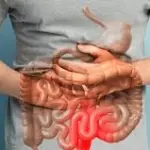Tennis Elbow Treatment | Expert Orthopedic Care
Get expert Tennis Elbow treatment with advanced therapies, accurate diagnosis, and personalized rehabilitation for fast pain relief and lasting recovery.

Tennis elbow
Tennis elbow, or lateral epicondylitis, is a condition characterized by pain and inflammation in the tendons that attach to the outer side of the elbow. While it is commonly associated with tennis players, it can affect anyone who engages in repetitive arm and wrist movements. Tennis elbow occurs when the tendons become overloaded due to overuse, leading to microtears and inflammation. This condition can be painful and limit daily activities if not treated properly.

Early Detection Saves Lives
Early detection and treatment are crucial for improving the chances of survival. If you notice any concerning symptoms, consult a healthcare provider immediately.
Signs and Symptoms
Pain on the Outer Elbow
The primary symptom is pain on the outer side of the elbow, often near the bony prominence (lateral epicondyle). The pain may also radiate down the forearm.
Pain Worsens with Activity
The pain intensifies with repetitive wrist movements or gripping actions, such as shaking hands, holding a racket, or lifting objects.
Weak Grip
One of the hallmark symptoms is weakness in the grip, making it difficult to hold onto objects, like a tennis racket or a jar lid.
Stiffness
The elbow may feel stiff, particularly after periods of inactivity or in the morning upon waking.
Tenderness
Pressing on the outer elbow can cause tenderness or pain at the site where the tendons attach.
Radiating Pain
In some cases, the pain can radiate down the forearm or up the upper arm.
Swelling
Mild swelling may occur in the elbow area, though it's less common than pain and stiffness.
Painful Movements
Actions like lifting, twisting, or extended use of the wrist (such as using a mouse or carrying bags) can exacerbate the pain.
Blood in Urine
Hematuria - pink, red, or dark urine, the most common symptom
Frequent Urination
Feeling the need to urinate frequently, even when bladder is not full
Painful Urination
Experiencing pain or burning sensation while urinating
Back or Pelvic Pain
Pain that occurs as the cancer grows and spreads
Unexplained Weight Loss
Significant weight loss not related to diet or exercise
Fatigue
Feeling unusually tired or weak without a clear cause
Meet Our Expert Tennis Elbow Specialists
Risk Factors
Smoking
Smoking is one of the leading causes of bladder cancer. Chemicals in tobacco smoke can damage the lining of the bladder, increasing the risk.

Gender
Men are at a higher risk of developing bladder cancer than women.

Chronic Bladder Infections or Inflammation
Conditions such as bladder infections and long-term bladder inflammation can increase the risk.

Exposure to Chemicals
Prolonged exposure to certain chemicals, especially those used in the dye industry, rubber production, and chemical manufacturing, increases the risk.

Repetitive Strain
Engaging in activities that involve repetitive wrist or elbow motions, such as tennis, painting, plumbing, or using a screwdriver, increases the risk of developing tennis elbow.

Age
Tennis elbow most commonly affects adults between the ages of 30 and 50. As we age, tendons lose elasticity and become more prone to strain.

Occupation
Jobs that require repetitive motions, particularly those that involve gripping or twisting (e.g., carpenters, plumbers, painters), can increase the likelihood of developing tennis elbow.

Sports Participation
Sports like tennis, squash, or racquetball that involve frequent use of the arm and wrist increase stress on the elbow tendons.

Improper Technique
In sports like tennis, using improper technique (such as a poor grip or incorrect swing) can strain the tendons in the elbow.

Weak Forearm Muscles
Weakness in the muscles of the forearm can lead to overuse of the tendons, resulting in tennis elbow.

Previous Injury
Having had an elbow or forearm injury in the past can predispose the tendons to further strain and injury.

Smoking
Smoking impairs blood flow and slows healing, making it more difficult for injured tendons to repair themselves.

Tennis elbow
Diet and Nutrition
Prevention
Diagnosis
Key Services
Key Facilities
- Protein: Protein is essential for tissue repair, especially for tendons. Lean meats, fish, eggs, and legumes provide the necessary amino acids for muscle and tendon recovery.
- Vitamin C: Vitamin C is important for collagen formation, which is vital for tendon repair. Citrus fruits, bell peppers, and strawberries are rich sources of Vitamin C.
- Omega-3 Fatty Acids: Omega-3s have anti-inflammatory properties that can help reduce swelling and pain. Fatty fish like salmon, walnuts, and flaxseeds are excellent sources of omega-3s.
- Magnesium: Magnesium helps with muscle relaxation and reduces cramping, which can support recovery. Foods like spinach, almonds, and avocados are rich in magnesium.
- Collagen: Collagen-rich foods like bone broth, chicken skin, and fish can help support tendon repair and improve joint health.
- Vitamin D: Vitamin D is important for bone health and muscle function. Ensure adequate intake through sunlight exposure, fortified foods, or supplements.
- Turmeric and Ginger: Both contain compounds with anti-inflammatory properties that can help reduce pain and swelling. Adding them to your diet may assist with the healing process.
- Zinc: Zinc plays a key role in tissue repair and inflammation reduction. Include zinc-rich foods like pumpkin seeds, cashews, and chickpeas in your diet.
- Hydration: Staying hydrated is important for joint health and helps maintain the lubrication of tendons, promoting healing. Drink plenty of water throughout the day.
- Strengthen Forearm Muscles: Strengthening exercises for the forearm muscles can help provide better support for the tendons in the elbow. Focus on wrist curls, grip strength exercises, and resistance training.
- Use Proper Technique: Whether playing sports or doing manual labor, using the correct technique is key. In tennis, for example, ensure that you are using the correct grip size and swing technique to avoid unnecessary strain on the elbow.
- Take Regular Breaks: If your job or hobby involves repetitive arm movements, take frequent breaks to rest and stretch the muscles around the elbow. Resting helps prevent overuse and strain.
- Avoid Overexertion: Avoid pushing through pain. If you feel discomfort in your elbow or forearm, stop the activity and rest. Overexertion can cause small tears in the tendons.
- Warm Up and Stretch: Properly warming up before activities and stretching the forearm muscles can prevent strain. Focus on stretching the wrist flexors and extensors before physical activities.
- Wear Proper Equipment: In sports like tennis, using the correct equipment (e.g., racquet with proper string tension, appropriate grip size) can help prevent strain on the elbow.
- Maintain Proper Posture: Good posture reduces strain on the elbow. Ensure that you are standing, sitting, and moving with proper alignment to prevent unnecessary stress on the joints.
Use Ergonomic Tools: If your work involves repetitive movements, using ergonomic tools that reduce strain on the elbow can help prevent tennis elbow. This includes using tools with padded grips and proper wrist positioning.
- Physical Examination: A doctor will perform a physical exam to assess pain, tenderness, and range of motion. They may use specific tests like the Cozen’s test or Mill’s test to determine if tennis elbow is the cause of pain.
- X-rays: While X-rays cannot show soft tissue damage, they may be used to rule out other causes of elbow pain, such as fractures or joint issues.
- MRI (Magnetic Resonance Imaging): An MRI can provide detailed images of soft tissues and may be used to assess the extent of tendon damage or inflammation.
- Ultrasound: An ultrasound can be used to visualize the tendons and detect inflammation or tears in the elbow region.
- Electromyography (EMG): EMG tests can evaluate nerve function in the elbow and determine if there is any nerve involvement or damage contributing to the symptoms.
- Pain Management: The first step in treatment is managing pain. This may involve the use of anti-inflammatory medications (NSAIDs), ice therapy, or corticosteroid injections to reduce pain and inflammation.
- Physical Therapy: A physical therapist will design a rehabilitation program that focuses on strengthening the muscles around the elbow, improving flexibility, and reducing pain through specific exercises.
- Ergonomic Adjustments: If tennis elbow is related to work or sports, modifications to posture or technique, as well as ergonomic tools, can help reduce strain on the elbow.
- Bracing: A brace or support may be used to immobilize the elbow and prevent further strain on the tendons. This can provide relief and facilitate healing.
- Steroid Injections: Corticosteroid injections can reduce inflammation and provide temporary relief from pain, though they should not be used excessively.
- Platelet-Rich Plasma (PRP) Therapy: PRP therapy involves using your own blood to promote healing in the injured tendons by stimulating tissue repair and regeneration.
- Surgical Intervention: In severe cases, when conservative treatments fail, surgery may be necessary to remove damaged tissue or repair the tendons.
- Orthopedic Clinics: Specialized clinics that focus on musculoskeletal conditions, including tennis elbow, offering both conservative and surgical treatments.
- Sports Medicine Centers: Clinics that specialize in treating sports-related injuries, including tennis elbow. They offer physical therapy, pain management, and advanced treatments like PRP therapy.
- Physical Therapy Centers: Facilities that provide rehabilitation services designed to restore movement, strength, and function to the elbow joint.
- Diagnostic Imaging Centers: Hospitals or clinics that offer advanced diagnostic tools like MRIs, X-rays, and ultrasounds to evaluate the extent of the injury.
- Surgical Centers: Specialized surgical centers that provide minimally invasive treatments, including arthroscopic surgery, to repair tendons in cases where non-surgical treatments have not worked.
Top Medical Facilities at Our Multispeciality Hospital – Here’s What Makes Us Different!
Ready to Begin Your Tennis Elbow Treatment Journey?
Learn More About Tennis Elbow Care
Frequently Asked Questions
Recovery time varies depending on the severity of the injury. With conservative treatments like physical therapy, recovery can take 6-8 weeks. Severe cases may require surgery and take 3-6 months to fully recover.
Mild cases of tennis elbow may heal with rest, ice therapy, and physical therapy. However, more severe cases may require medical intervention, such as injections or surgery, to fully heal.
To prevent tennis elbow, strengthen the forearm muscles, warm up before activities, use proper technique, and take breaks from repetitive movements. Maintaining a healthy weight and using ergonomic tools can also reduce the risk.
